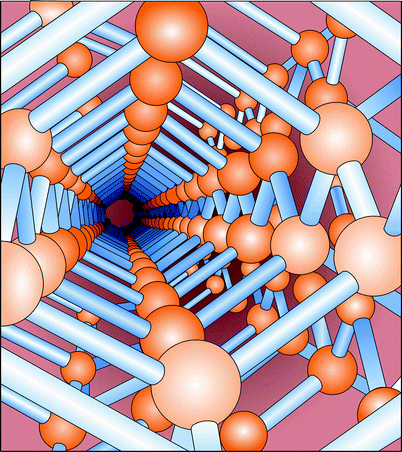Introduction to Doping
Imagine you have a group of friends, and you want to play a game where everyone has to line up based on their heights.
But you want to make it more interesting, so you decide to give special stickers to some friends that make them a bit taller or shorter. This way, the line will have gaps and some people will stand out more than others.
In a similar way, doping in semiconductors is like adding tiny amounts of special atoms to change how well a material conducts electricity.
Semiconductors are materials that can sometimes conduct electricity and sometimes not, depending on the conditions. By adding these special atoms, called dopants, we can control how well the semiconductor can conduct electricity.
In this article, we’ll delve into the world of semiconductor doping, exploring its significance, process, and impact on electronic devices.
What is Semiconductor Doping?
Semiconductors, like silicon, have a unique ability to conduct electricity under specific conditions. Doping is a deliberate process of introducing impurities into a semiconductor material to alter its electrical properties.
Silicon is one of the most common semiconductors. In computer chips, like the ones in your smartphone or laptop, different types of dopants are added to create areas that conduct electricity (called “n-type”) and areas that don’t conduct as well (called “p-type”).
This creates transistors and other electronic components that make computers work.
These impurities are carefully selected elements that have either extra electrons (n-type doping) or missing electrons (p-type doping) compared to the host material.
Doping and the Evolution of Computer Chips:
Imagine you’re building a sandcastle on the beach. You’ve got regular sand, but you want to make certain parts of your sandcastle stand out and do different things. You decide to mix in some special colored sand in those areas to make them unique.
In the world of computer chips, silicon is like the regular sand, and “doping” is like adding the special colored sand. This colorful sand doesn’t just change the color; it changes how the sand behaves, which is super important for making computer chips work.
Historical Context of Doping:
Back in the mid-20th century, scientists and engineers were trying to figure out how to make electronic devices, like switches and amplifiers, smaller and more efficient. They realized that silicon, a material that’s pretty common in sand, could be used to create tiny components called transistors.
But there was a problem: how do you control the flow of electricity in these silicon transistors? This is where doping came in.
Doping Enters the Scene:
Scientists discovered that if they added tiny amounts of different elements, like boron or phosphorus, to the silicon, they could change its electrical properties. Think of these elements as the colorful sand I mentioned earlier. They would mix a small amount of the special elements into the silicon, creating regions with extra electrons (n-type) or regions with “holes” for electrons (p-type).
These n-type and p-type regions acted like different types of sand in our sandcastle analogy. By carefully placing these regions next to each other, scientists could create switches and controls that could turn the flow of electricity on and off. This was the birth of transistors!
The Impact on Chips:
As time went on, researchers figured out how to make these transistors smaller and smaller. This meant you could fit more of them on a single piece of silicon, like putting more and more sandcastles in the same space. This miniaturization process is what allowed the development of more powerful computer chips.
Every few years, engineers found ways to make the transistors even tinier, allowing more of them to fit on a chip. This made computers faster, smaller, and able to do more tasks. Over time, it led to the creation of smartphones, laptops, and the vast array of electronic devices we rely on today.
So, in simpler terms, doping changed the world of computer chips by giving scientists and engineers a way to control the behavior of silicon, which in turn allowed them to create tiny switches (transistors) that make our modern electronic devices possible.
Function of Doping Process
The doping process in semiconductors serves several essential functions:
Controlled Conductivity: Doping introduces specific impurities to regulate the semiconductor’s electrical conductivity.
Type Differentiation: N-type doping adds extra electrons, enhancing electron flow, while p-type doping creates “holes,” promoting positive charge movement.
Creating Charge Carriers: Doping generates charge carriers (electrons or holes) vital for current flow within the semiconductor.
Forming Junctions: Differently doped regions create p-n junctions, enabling diodes and transistors—fundamental components in electronics.
Modulating Properties: Doping tailors properties like resistivity, enabling precise customization for various applications.
Enabling Amplification: Doped semiconductors amplify weak signals in transistors, crucial for signal processing and amplification.
Facilitating Energy Conversion: Doping in solar cells converts light energy into electricity through controlled charge movement.
Advancing Electronics: Doping’s manipulation of charge carriers underpins integrated circuits, driving modern computing and communication technologies.
Types of doping
Doping in semiconductors involves introducing impurities to modify their electrical properties. There are two primary types of doping: N-type and P-type, each leading to distinct conductivity behavior. Here’s an explanation of both types along with examples:
N-Type Doping:
N-type doping involves adding impurities that introduce extra electrons (negative charge carriers) into the semiconductor lattice.
This enhances the material’s conductivity, as electrons are mobile and contribute to current flow.
Commonly used dopants for N-type doping include phosphorus (P) and arsenic (As). These elements have more valence electrons than the host semiconductor material (e.g., silicon), creating a surplus of electrons.
Example: Phosphorus (P) doping in silicon (Si) creates N-type silicon. Phosphorus, with five valence electrons, replaces some silicon atoms.
The extra electron becomes a charge carrier, significantly increasing conductivity.
P-Type Doping:
P-type doping involves adding impurities that create “holes” (positively charged vacancies) in the semiconductor lattice.
These holes can move through the lattice, contributing to current flow. Common dopants for P-type doping include boron (B) and gallium (Ga). These elements have fewer valence electrons than the host semiconductor material.
Example: Boron (B) doping in silicon (Si) results in P-type silicon. Boron, with three valence electrons, replaces some silicon atoms. This creates “holes” where electrons can move, effectively introducing positive charge carriers.
In summary, N-type doping adds extra electrons, increasing conductivity, while P-type doping creates holes, also promoting conductivity but with a positive charge carrier.
The combination of N-type and P-type regions in semiconductors forms p-n junctions, crucial for diodes and transistors in electronic devices.
Real life example
A real-life example of doping can be found in the manufacturing of silicon-based solar cells, which rely on controlled doping to function effectively.
In a silicon solar cell:
N-type Doping: Phosphorus, a group-V element, is introduced into a thin layer of silicon. This process creates an excess of electrons (negative charge carriers) in the silicon crystal structure, turning it into an N-type semiconductor. These extra electrons enhance conductivity.
P-type Doping: Boron, a group-III element, is introduced into another layer of silicon. This introduces “holes” or electron deficiencies (positive charge carriers) in the crystal structure, turning it into a P-type semiconductor.
The interface between the N-type and P-type layers forms a p-n junction. This junction allows solar cells to efficiently convert sunlight into electricity:
Absorption of Photons: When photons from sunlight strike the solar cell, they can dislodge electrons from their positions.
Generation of Electron-Hole Pairs: In the N-type layer, some of these dislodged electrons are free to move due to the excess of electrons. In the P-type layer, the holes are free to move due to the shortage of electrons.
Separation and Current Flow: The electric field at the p-n junction drives the dislodged electrons towards the N-type side and the holes towards the P-type side, creating a flow of electrical current.
Electricity Generation: This flow of electrons constitutes an electric current that can be drawn from the solar cell, providing a source of electricity.
Doping in solar cells enhances their ability to absorb and convert sunlight into usable electrical energy.
It creates the necessary electrical imbalance for the efficient separation of electron-hole pairs, which is crucial for the functioning of solar panels in generating electricity from sunlight.
Future of semiconductor doping
As technology evolves, so does the potential of semiconductor doping.
Quantum Dots: Researchers are exploring new doping techniques to manipulate semiconductor nanoparticles called quantum dots.
These holds promise for applications in quantum computing and advanced displays.
Nanoelectronics: Doping at the nanoscale level could lead to ultra-small and efficient devices, paving the way for new realms of computing and communication.
Conclusion
Semiconductor doping is the unsung hero behind the incredible power and versatility of modern electronics.
By skillfully introducing controlled impurities into semiconductor materials, engineers can engineer devices that are the heart and soul of our digital world.
From smartphones to renewable energy systems, the impact of doping is profound, and as technology marches forward, the possibilities it unlocks are boundless.




